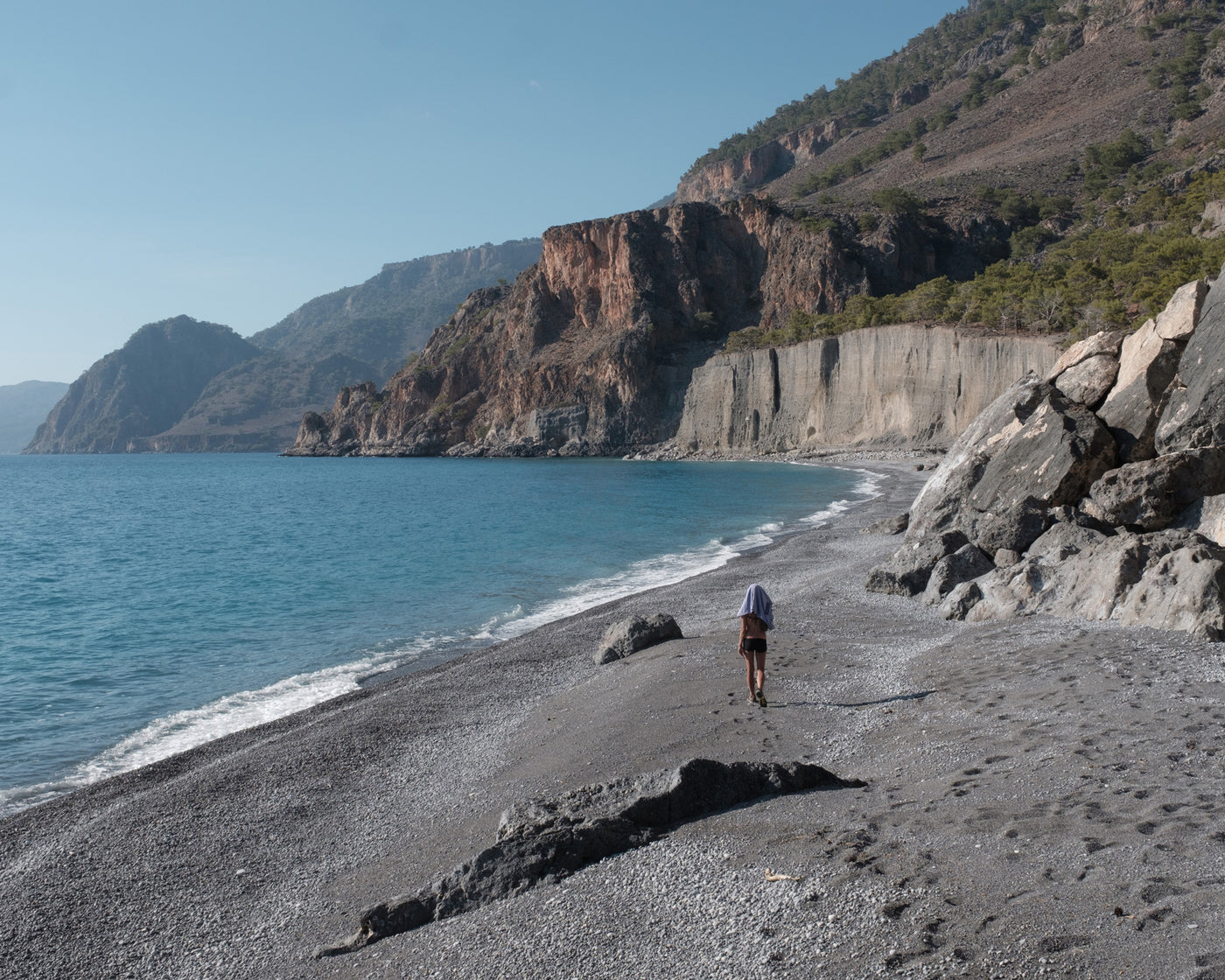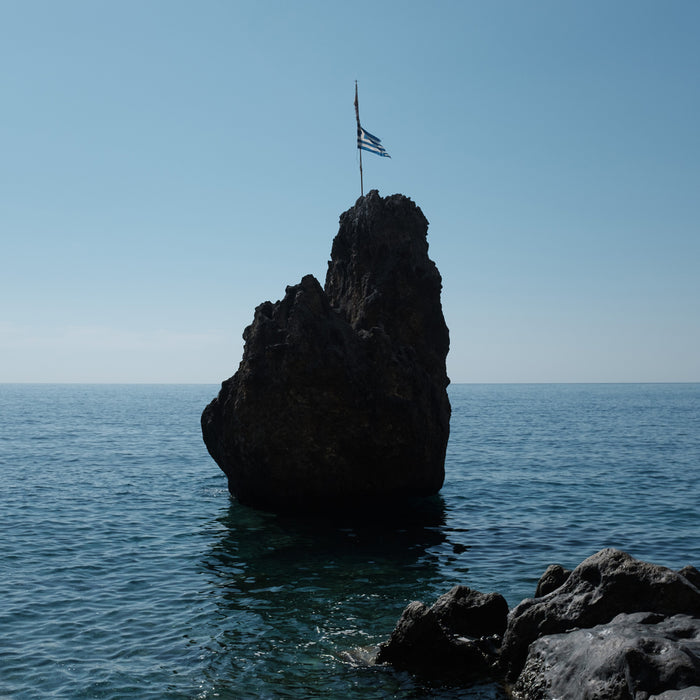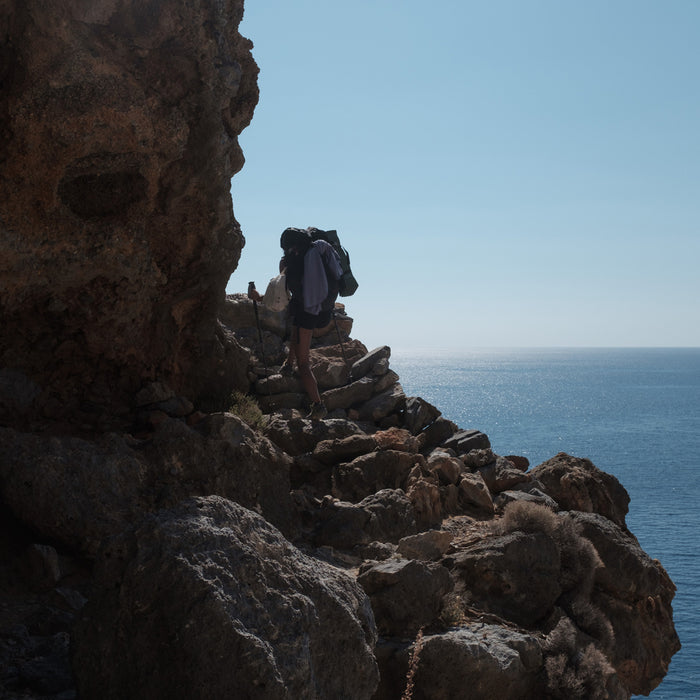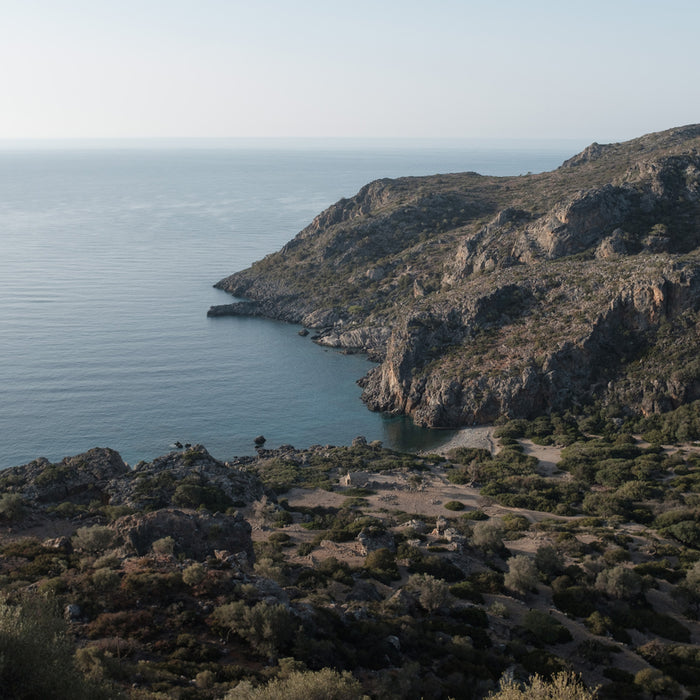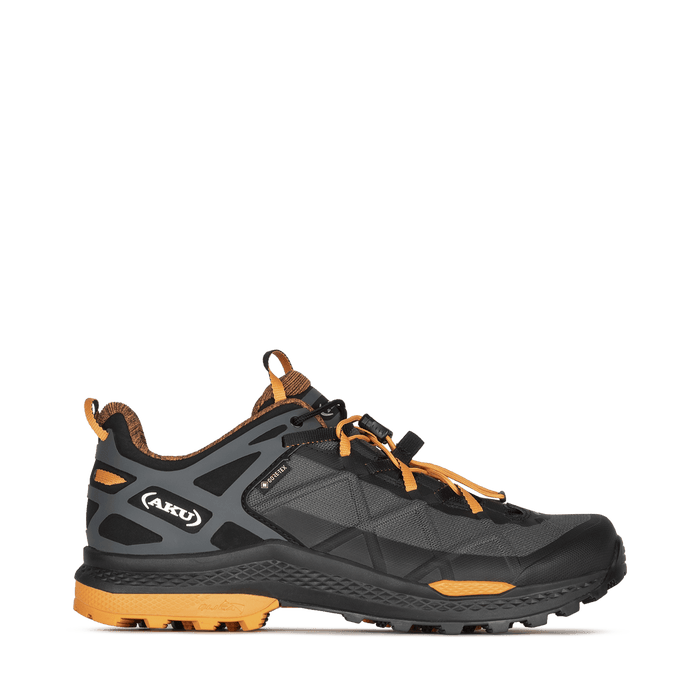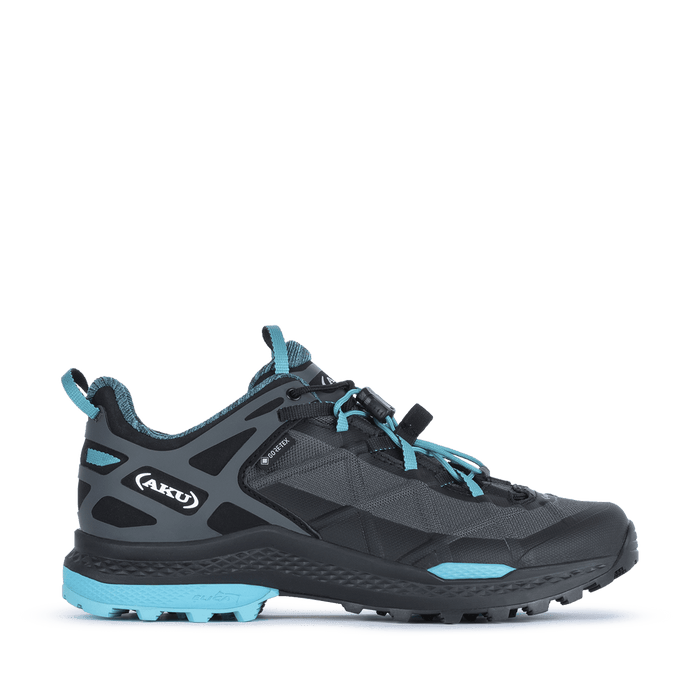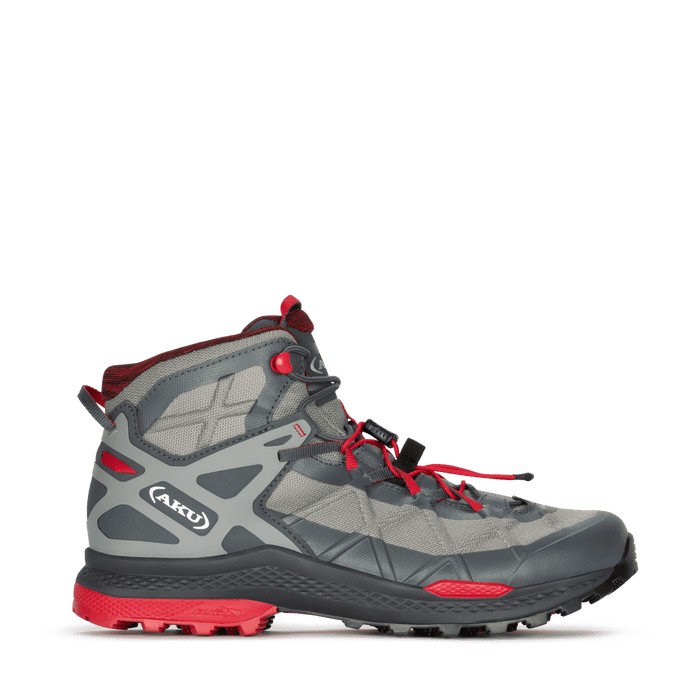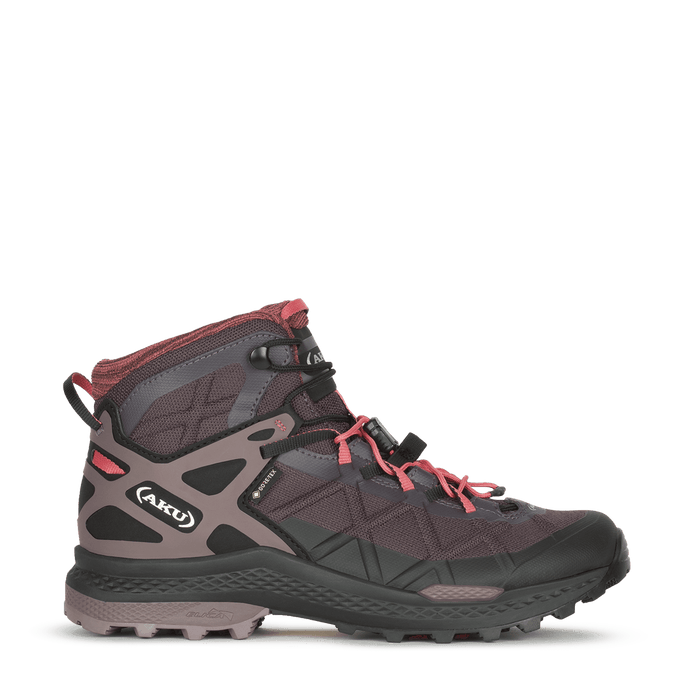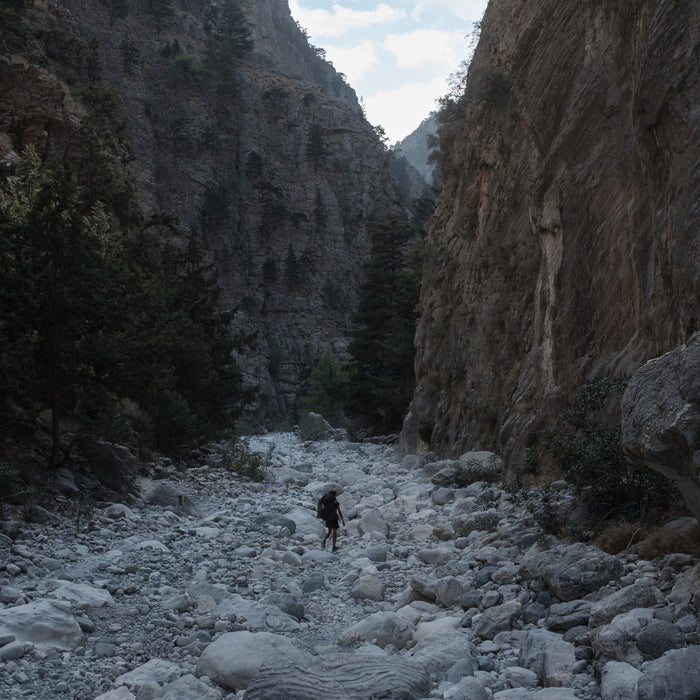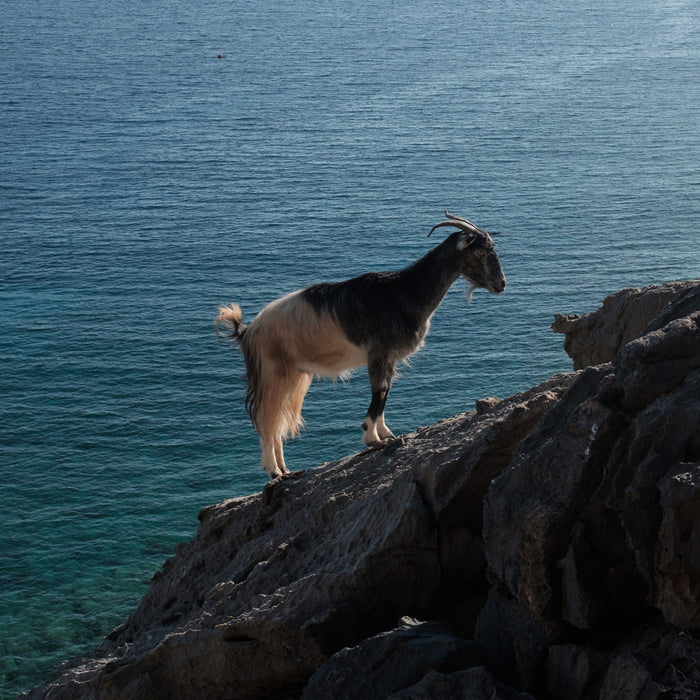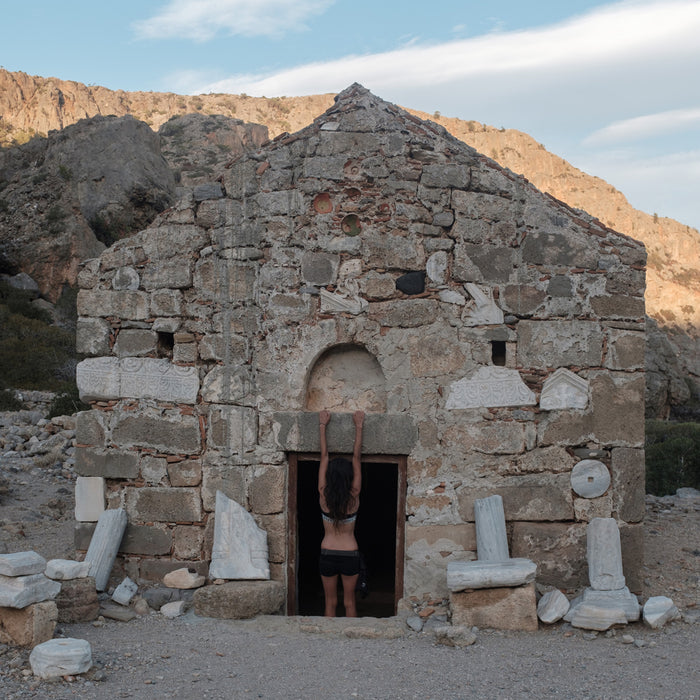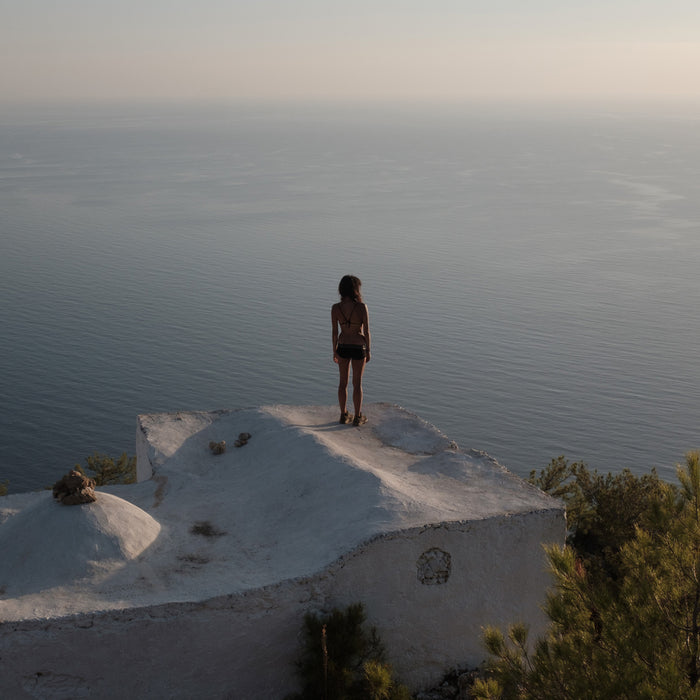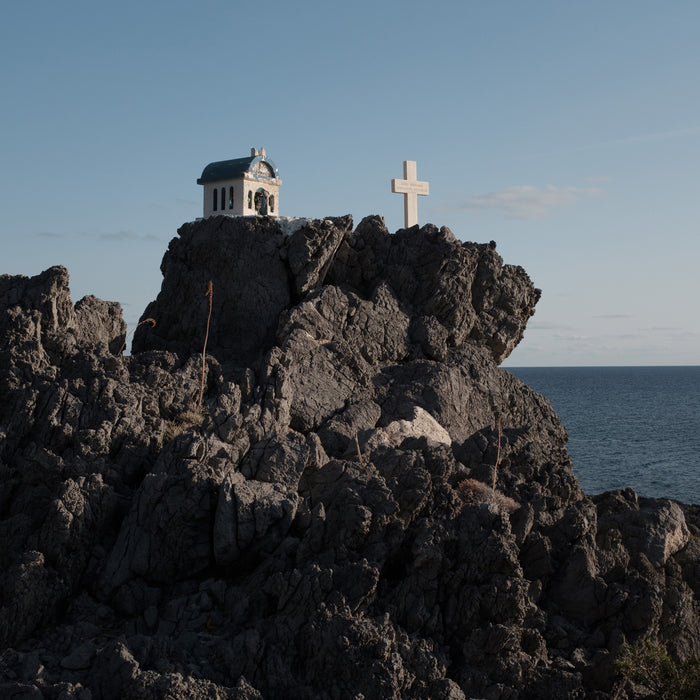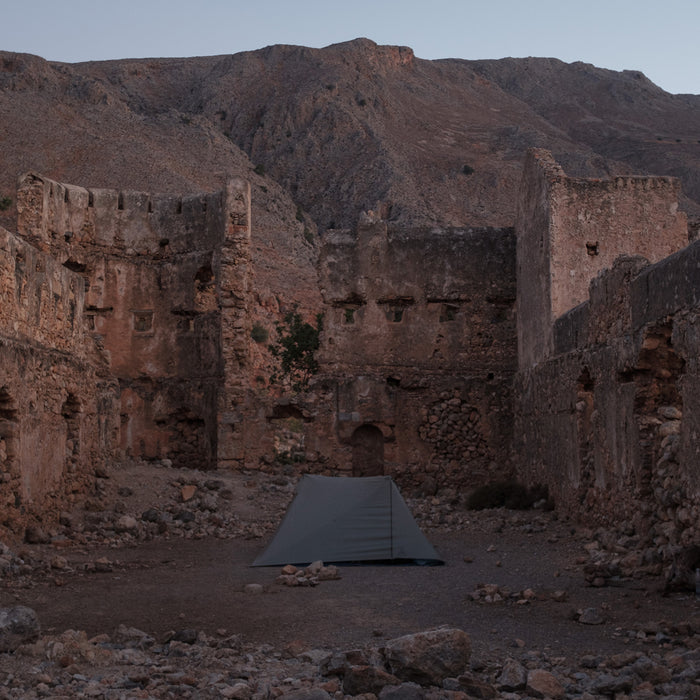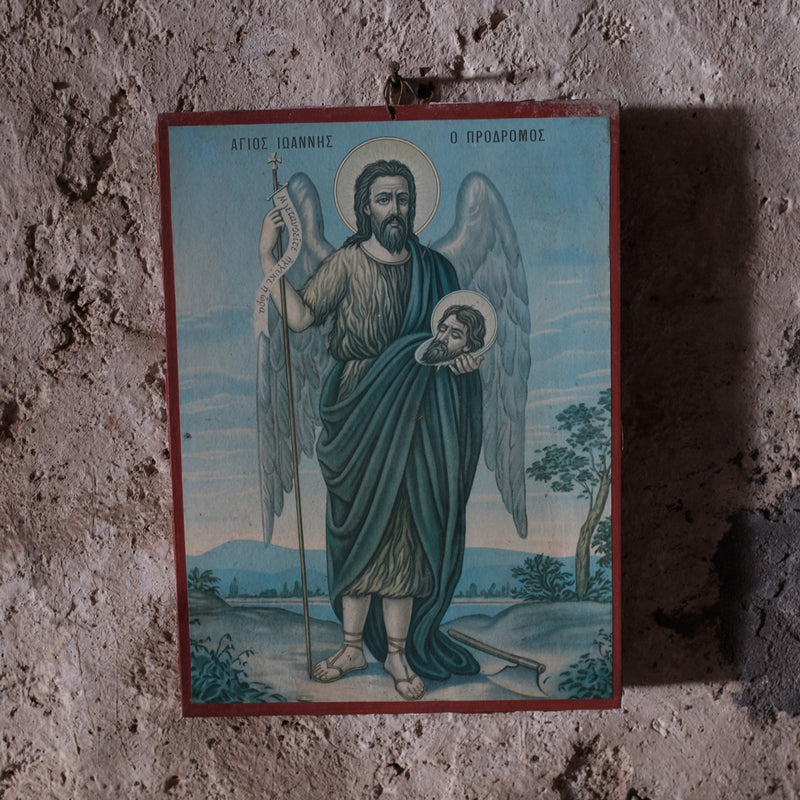The most beautiful pages of our adventure on Earth always arrive unexpectedly. So I found myself walking in Crete, Erika and I on this clod of sand while the absurd and blinding Libyan Sea touched our toes. Kaleidoscope of the Mediterranean, how many stories and images can an island contain? Just this word is enough and the mind already wanders on its own. We know nothing about this place, I forgot the history studied to rediscover it here in the effort of the steps and behind every horizon. I avoided reading any guide, it's all here if only we have the patience and love to interpret the signs.
I am a mountain man and it never occurred to me that you could walk near water, salt water at that. I thought the sea was made only for sailing on. I see a small boat approaching, full of little colored boxes, are they for bees? Sea bees? Bees on vacation? In the archaeological museum of Heraklion there is a gold pendant with two bees looking at each other. Acrobatic beekeepers and bull jumpers, sons of Minos and of a civilization that at a certain point disappeared and no one even knows why. But the bee fishermen have never stopped returning to land with a booty of thyme honey.
We want to walk part of the E4 trail, it's not a particularly poetic name but it's the longest trail in Europe, almost ten thousand kilometers. As if superlatives mattered. And it's the high mountains that fall into the Libyan Sea that attract me to the south-west of the island, an important detail for those who, arriving from the mainland, don't want to risk seasickness.
We immediately get lost in the pungent Mediterranean scrub and only a rise helps us find our way again: we spot the pink beach of Elafonissi, teeming with tiny human beings. We pass by cedar trees and beaches where nudity is the norm. Votive chapels appear every now and then, like in our Alps, only here they resemble shipwrecks. They are miniature churches, leaning on the rocks and colored white and blue. On the beach we find a stretch of amphora shards and it takes me a while to realize that the stone I'm sitting on was an ancient column encrusted with sea. It's always the sunsets that make us find unexpected treasures. Is it the time that makes a place magical or is it just because we were predestined to that place? In a roadstead in the middle of nowhere hundreds of stone houses lie abandoned. Where have they gone? Lissos must have been full of life two thousand years ago when offerings were brought to the God Asclepius, who almost bankrupted Hades with his mania for healing mortals. We take care not to disturb his snakes and fall asleep exhausted but happy.
At night, at the seaside, you sweat.

Jacob Balzani Lööv
Jacob Balzani Lööv is an Italian-Swedish photographer obsessed with stories of people intimately connected to a particular place. Although passionate about the outdoors, Jacob's main focus is documentary photography , work that takes him to different environments, not only natural, but often to those theaters of conflict where human events of global importance are taking place.
The next day when a small valley opens onto Soughia, we are called back to the mountains and spend the whole day climbing the gorge of Aghia Irini to find ourselves in a landscape of sheep and shepherds. Perhaps, just as I imagine it, it is here in the hinterland that the Cyclopes hide.
At Omalos, the plateau, I feel almost at home among these mountains where I can already feel the signs of autumn in some piles of leaves blown by the wind. Continuing to climb I leave Erika to eat chestnuts and enjoy the sun with the friendly managers of the Kallergi refuge and, obsessed with heights, I reach Melintaou from where I admire the lunar and limestone landscape of the White Mountains. Two hunters are quickly chasing some rare goats that the Cretans call Kri Kri. When I return it is night, the full moon is already high and lights up the gorge that we will descend the next day. The sea breathes fifteen hundred meters below and for the first time I am cold.
In the center of the gorge, among ancient olive trees, there are the remains of a village that was abandoned only in 1962. Among very steep slopes what safer place to take refuge? In fact these are places of resistance and refuge from the numerous invaders of the island that after the Minoan glories was mostly a colony. Venice occupied Crete for 462 years. At the end of the seventeenth century Heraklion, then Candia, was besieged for twenty-one years by the Turks. People talked all over Europe about this ignoble siege that they should have put an end to against the infidels, but once the enthusiasm of the crusades had passed, without a true common front the words remained words and in the end the island became part of the Ottoman Empire and remained so until its end.
How Deep the Sea, everyone knows Dalla's song but on the white roof of a little church, unreachable except with effort, just as the blue of the water becomes indistinguishable from the sky, that music resonates with all the soul. It tells the story of humanity, starting from the fish from which we all descend: it is a path full of drama and inequalities but it is the lulling presence of the sea, which cannot be fenced or blocked, like thought, that restores our serenity. Venus is there, motionless and all around is now primordial black.
Wildened by the free camping of Aghia Roumeli, it is in the last days of walking that we complete our transformation. Along the way we have stripped ourselves of everything that is not essential. Between the arid earth and the salty air there are only us and our bodies left to take care of. It is all very simple here in the heat where a few clothes, a few gestures and a lot of water are enough. The last night in Loutro, after an aperitif of feta, tomato and white wine, we ring the bell of a church among the rocks for the last time. There are no roads here. We sleep under the stars, inside the ruins of a castle overlooking the port. Just before falling asleep, a phrase that I must have read in Moby Dick about a very distant island comes to mind: “It is not marked on any map: real places never are.” A shooting star falls. I dream.
From the monastery of Chrisoskalitissa to Hora Sfakion along the E4 trail. The route from Soughia to Aghia Roumeli was done both by going up the Aghia Irini gorge and going back down the Samaria gorge and along the coast (all the villages are connected by one or more daily ferries). A description can be found here (stages 5-14). Along the route you can count on daily supply points and guesthouses with the exception of the stage along the coast between Soughia and Aghia Roumeli (very long and demanding to do in a day). Recommended period: all year round except summer.


